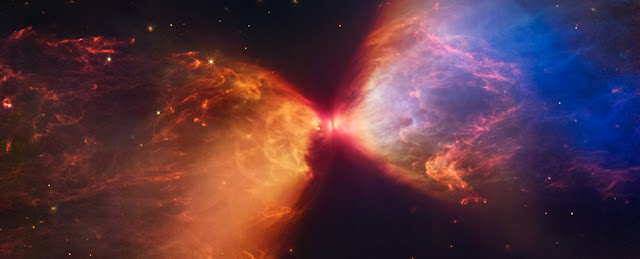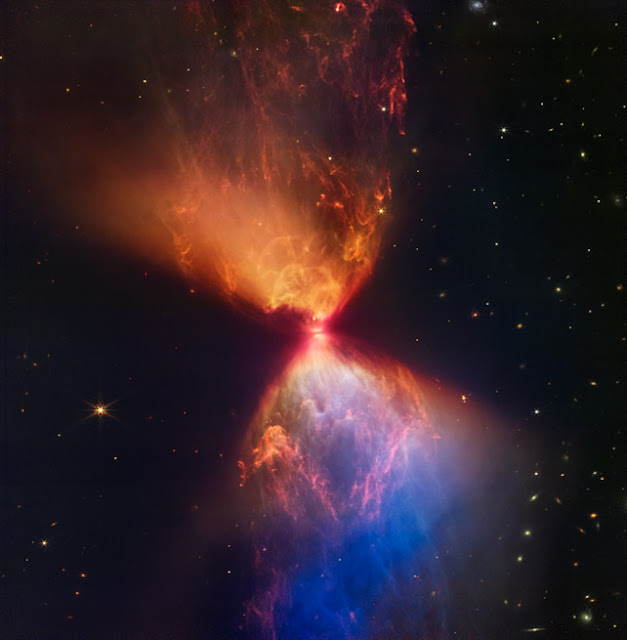A recently born star commencing its life in the midst of a dusty hourglass has been captured by JWST.
According to a statement by NASA and the European Space Agency, the vibrant clouds can solely be perceived in infrared light, and were never observed before the Near-Infrared Camera (NIRCam) of Webb detected them. A gas disk rotating at the neck of the hourglass covers the protostar L1527, which is very young, but light seeps out from the disk’s top and bottom, illuminating the hourglass-shaped clouds.

The clouds are produced as material ejected from the star crashes into the surrounding matter, with the dust being densest in the orange parts and least dense in the blue portions.
The protostar, which is in the earliest stage of star formation and is only 100,000 years old, cannot yet produce its own energy.

The boundaries of the cavities above and below the protostar, which radiate orange and blue in this infrared image, have been cleared out by the ejections from the protostar. As per the statement, the black disk surrounding the protostar, similar in size to our solar system, will provide material to the protostar until it attains “the threshold for nuclear fusion to begin.” The statement further stated that this observation of L1527 presents a glimpse of what our Sun and Solar System looked like in their nascent stage.
L1527 is located in the Taurus molecular cloud, which is a stellar nursery housing numerous nearly formed stars and is approximately 430 light years away from Earth. Webb, the most powerful space telescope ever built, has been operational since July, providing unprecedented data and spectacular images. Scientists are optimistic that it will usher in a new age of exploration.
One of the principal objectives of the US$10 billion telescope is to examine the life cycle of stars, with a focus on exoplanets, which are planets outside of Earth’s Solar System.
Do not forget to share your opinion with us to provide you with the best posts !



0 Comments